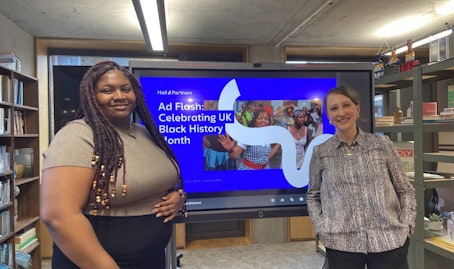Perspectives

Marketing campaigns are more measurable than ever. Digital advertising metrics like impressions, clicks, view-through rates, and engagement metrics are reported in real time, driving rapid decisions on how and where to spend. But even with all of these optimization opportunities, brand managers have to ask themselves: Is my campaign actually making a lasting impression on the people who matter?
Most brand teams focus on visibility and speed, but often fail to measure whether their marketing campaigns are truly remembered - and more importantly - connected back to their brand. That’s a missed opportunity to build one of the most powerful drivers of long-term brand growth: mental availability. Brands that optimize for memorability, not just reach, are the ones that succeed in the long term.
Mental availability: The missing metric in marketing effectiveness
Mental availability refers to how easily a brand comes to a consumer's mind in buying situations. The more often, and more quickly, people think of your brand when faced with a purchase decision, the more likely you are to grow market share.
Most marketers recognize this and invest in brand strategies designed to stand out and be relevant at key buying moments. But here’s the gap in campaign performance metrics: while brands try to build mental availability, few actually measure if their campaigns are memorable.
Current campaign metrics are largely exposure-based. They tell us who were served with an ad, when, and for how long. What they don’t tell us is whether that exposure strengthened memory structures tied to the brand. And without this, marketing campaigns become noise—visible, but forgettable.
Why measuring memorability matters more than ever
Digital ad-tech has made it possible to tweak campaigns on the fly. Algorithms reward what performs best in the moment. But campaign exposure alone doesn’t build memory. And without memory, there’s no mental availability. No long-term brand impact.
Today’s consumers are constantly bombarded with ads and content. Attention is fleeting. In this saturated environment, it’s harder than ever to create marketing that doesn’t just reach, but resonates. That doesn’t just interrupt, but imprints.
And that means shifting the question from “Did people see our campaign?” to “Will they recall our brand when it counts?”
To grow mental availability, you need to create and measure brand-linked memorability: how well your message is remembered and how strongly it is connected to your brand. Only then can you be confident that your marketing efforts are laying the groundwork for future growth, not just short-term gains.
Three ways to make your brand more memorable
Through extensive brand research work with clients across industries, we’ve found that the most memorable marketing (i.e. the kind that boosts mental availability) has three things in common: it’s different, distinctive, and consistent.
1. Be different: Drive attention through your brand differentiation strategy
Difference attracts attention. But being different doesn’t mean being outrageous or gimmicky. It simply means your brand strategy should avoid the trap of sameness. In a category where most brands look and sound alike, originality signals freshness and relevance. Think of how many car commercials you’ve seen in the last year that look and sound almost exactly alike. Can you recall which brands are tied to which ads?
More importantly, the difference must be purposeful. It should express something meaningful about your brand, not just break category norms for shock value.
Ask yourself: Does this creative look and feel like all the other ads in my category? Would it stand out in a crowded room of ads? If it blends into the noise, it won't be remembered.
2. Be distinctive: Build recognition through brand assets
Memorable creative isn’t enough. Your audience needs to know who it’s from.
That’s where distinctive brand assets come in - logos, color palettes, taglines, characters, and even sounds that are uniquely and unmistakably yours. These act as mental shortcuts that help people connect the dots between what they saw and your brand.
A simple test: If you replaced your logo with a competitor’s, would the campaign still make sense? If so, your work isn’t truly ownable yet. Think of brands like CeraVe who partnered with Michael Cera…no other skincare brand could use him with any credibility! Name plays like this are a shortcut to ownability, but over time, brands can earn other forms of associations which become unmistakably theirs.
Distinctive assets help embed your brand into the message. Without them, even great creativity may go to waste.
3. Be Consistent
It’s tempting to change things up. Marketers, living inside their brands, often tire of their own campaigns long before the public does. But memorability is built through repetition, not reinvention. Corona has been running the same Christmas ad since 1990, and using the same simple beach imagery for even longer.
Consistency across channels, campaigns, and time helps reinforce memory structures. It makes it easier for consumers to recognise and recall your brand. When change is necessary, connect the dots, use transitional elements or familiar cues that carry the brand forward while building on the past.
Think of this as laying a trail of breadcrumbs for your audience. The more familiar the path, the easier it is for them to follow you.
Rethinking campaign effectiveness
Simply being seen is no longer enough. Brand growth lies not just in exposure, but in impression, not just in real-time optimisation, but in long-term memory.
Brands that measure and optimise for memorability are better equipped to build mental availability and grow over time.
That means complementing your campaign dashboards with insight into what’s sticking. Moving beyond clicks to cognitive impact. And recognising that the most valuable impression is the one that lasts.
At Hall & Partners, we help brands move beyond traditional performance metrics by measuring the true impact of their marketing: how well it is remembered and how strongly it is associated with the brand.
Our proprietary approaches combine social and behavioral science, and brand tracking to assess memorability in a way that’s actionable and predictive of future growth.
Because building mental availability isn’t guesswork - it’s measurable. And in a market where attention is scarce and sameness abounds, memorability is your moat. Contact us and discover how we can help you build and measure metrics that matter.
Meet our authors
Matt Vicenzi, Partner, Hall & Partners
Ben Westley, Group Strategy Director, Hall & Partners
Talk to our team of experts
Learn how we can deliver actionable insights and creativity to drive brand growth.








